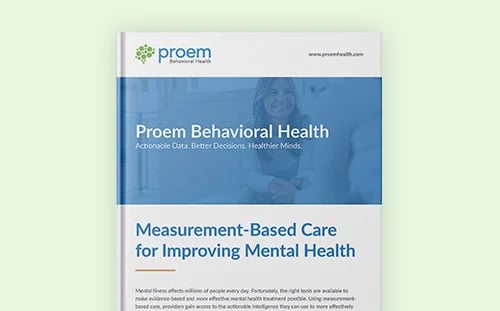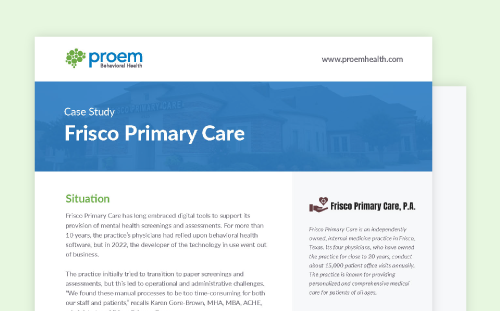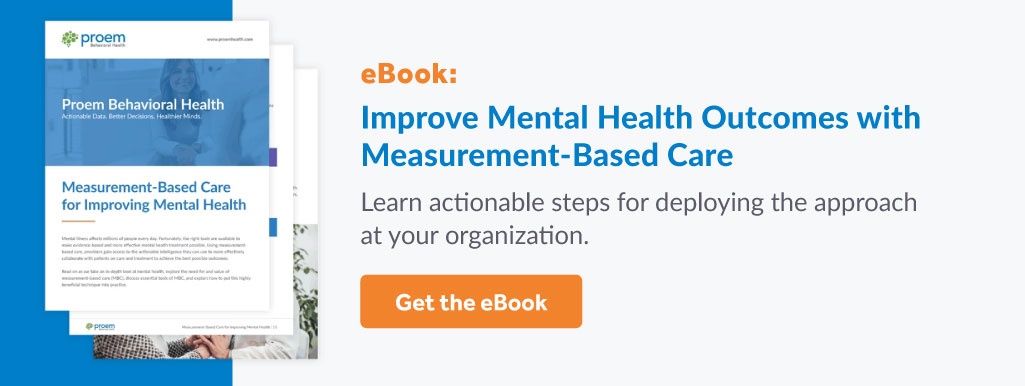When it comes to measuring health, many people may think of a thermometer or blood test. After all, observation can be a powerful way to uncover information from patients.
But what about seeking information from patients themselves? Self-reported data, such as perceptions of sleepiness or level of pain, also can be useful in screening for and monitoring patient health. And when it comes to behavioral health, a patient’s report of their own mood and feelings, their levels of anxiety or stress, or the frequency of obsessive thoughts can significantly affect a doctor’s diagnosis and treatment plan.
Yet getting self-reported information through conversational means alone can be challenging. Patients may be reluctant to share information face-to-face with their clinician given stigmas around mental health. Discussions can be time-consuming, presenting challenges to conducting them at scale. And an unstructured exchange can sometimes miss important pieces of information.
Fortunately, use of rating scales can help overcome such challenges.
What Is the Purpose of a Rating Scale?
In addition to helping counter the shortfalls just highlighted, rating scales also carry a more powerful benefit: They provide a quantitative measure of the patient’s experience. They serve as a consistent means to monitor individual progress during treatment over time.
Use of ratings scales can help clinicians quickly identify whether care interventions are aiding progress and recognize early on when maintenance efforts may be falling short. Having ready access to this information makes it easier for the clinician to adjust treatment based upon how the individual responds. Measuring and adjusting care to an individual this way have been shown to help improve outcomes, notably in research on anxiety and/or depressive disorders.
The use of rating scales also has broader benefits. Uniform and abundant data can be used to compare patients with others. Aggregate information on what is or is not working with treatment provides valuable insights to researchers as they work to identify best practices and processes. In addition, aggregated symptom rating scale data can be used for professional development at the provider level and for quality improvement at the clinic level. Using data to track population health this way also can inform payers about the value of care delivered at the system level.
The use of patient-reported rating scale scores in conjunction with evidence-based practices to guide a precise care plan is an integral facet of measurement-based care in behavioral health. For more information on the benefits of measurement-based carenoted, see "A Tipping Point for Measurement-Based Care," which provides a full literature review.
3 Measurement-Based Care Tools
A number of rating scales can be used in the practice of measurement-based care. Three widely used examples in behavioral health are the Mini-International Neuropsychiatric Interview (M.I.N.I.), the Sheehan Disability Scale (SDS) and The Sheehan-Suicidality Tracking Scale (S-STS).
Mini-International Neuropsychiatric Interview (M.I.N.I.)
The Mini-International Neuropsychiatric Interview (M.I.N.I.) assesses 17 of the most common DSM-5 mental health disorders in adults and 24 most common mental health disorders in children. There are several versions available: a standard version and individual versions that drill down into each of the disorders. Physicians use a flow chart to help them determine which version would be most appropriate for specific patients. It takes about 25 minutes to conduct the standard M.I.N.I., with the clinician asking the patient about symptom presence and frequency using a series of branching yes/no questions.
Sheehan Disability Scale (SDS)
The Sheehan Disability Scale (SDS) measures functional impairment across three domains: work/school, social, and family life. It is based on self-report data using a 10-point scale from 0 to 10. Patients are asked to rate to what extent the symptoms they are experiencing have disrupted their lives in these domains from not at all (0), to mildly (1-3), moderately (4-6), markedly (7-9) and severely (10).
Sheehan - Suicidality Tracking Scale (S-STS)
The Sheehan-Suicidality Tracking Scale (S-STS) is a survey that asks patients to respond to 14 questions on a rating scale from 0 (not at all) to 4 (extremely) to assesses the seriousness of suicidal thoughts, plans, intent, impulses, hallucinations, preparatory behaviors, and suicide attempts. It can be used as a patient self-report or as a clinician-administered rating scale that tracks ideation and behaviors.
For more information on rating scale use in measurement-based care and supporting screening and assessment tools, visit proemhealth.com or contact Proem to learn more.















